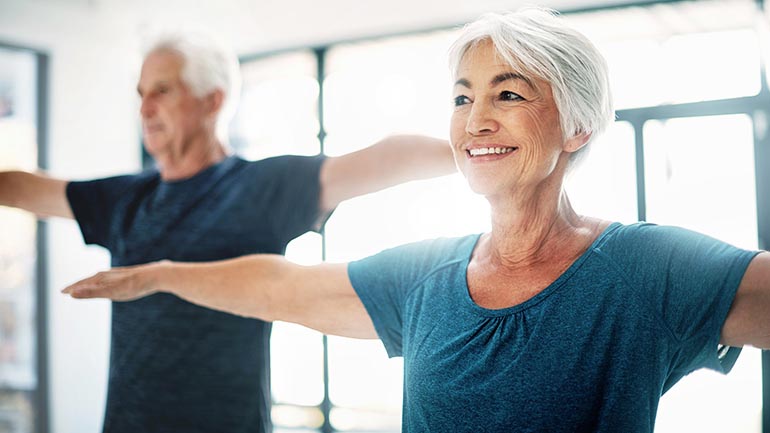Over 50? Here are 5 myths you shouldn’t believe

Make exercise a priority in mid-life
Everyone should find a workout or active hobby they enjoy to reap the benefits of exercise. This is especially true for people over 50 who might not be moving as much as they have in the past. Don’t let the following myths prevent you from staying active and healthy.
Find out how much exercise you need to live longer.
Myth: I haven’t exercised my whole life – it’s too late to start
The one thing to remember is that you’re never too old to start exercising. “There is no expiration date on our body’s ability to benefit from physical activity,” says personal trainer and specialist in geriatric physiotherapy, Alice Bell. “Studies show that individuals who adopt an active lifestyle at any age can demonstrate improvements in strength, endurance, balance, and cognitive performance.”
Myth: I shouldn’t run anymore
A sedentary person shouldn’t attempt a marathon overnight – or even a 5K. But regular runners don’t have to stop just because they’re getting older. Running is fantastic for cardiovascular health and mental clarity. “People say that running is too hard on your joints and should be avoided, particularly as you age, however, there are many people who run well into their older age and continue to see benefit without issues,” says physiotherapist, Chad McCann. “While the choice to run should be individual, there is little indication that running leads to arthritis or joint damage. Some people can continue to run successfully as they age, although their distances and intensity may change to promote health.” Wearing the right shoes is key to preventing injury.
Myth: Walking is enough
Walking is great, but your body needs more. “The greatest long-term benefits of exercise stem from working your body into overload, meaning pushing strength, flexibility, and cardio conditioning to force your body to adapt to more stressful requirements,” explains McCann. “While there is research connecting some walking to basic heart health, walking alone does not stress your heart enough to create true cardiovascular improvement.” Try building in some intervals – short bursts of fast walking or jogging – into your walks, and make time for strength training as well, he says.
Check out what happens to your body when you start walking 10,000 steps a day.
Myth: Lifting weights is bad for my joints
You don't need to stick to one-kilo weights just because you’re 50, 60, or even 70. It’s all about knowing your body and proper form. “Weight-lifting can be a very daunting form of exercise – some people are concerned that it will actually produce more harm than good. However, lifting with good form and appropriate weights has been proven to be safe and effective for strength development for all ages,” says McCann. “In addition, weight-lifting is critical for long-term bone health and general strength can be a good indicator of long-term independence. There is little evidence that weight-lifting leads to arthritis or other joint issues.”
Myth: You can’t fix poor balance
“Balance is just like all other forms of fitness – the more you work on it, the better it gets,” says McCann. More to the point, being steady on your feet will help you avoid falls and stay healthy, “It’s another solid predictor of lifelong independence and shouldn’t be ignored in any fitness regimen.”
Written by Sharon Feiereisen. This article first appeared in Reader’s Digest. For more of what you love from the world’s best-loved magazine, here’s our best subscription offer.
